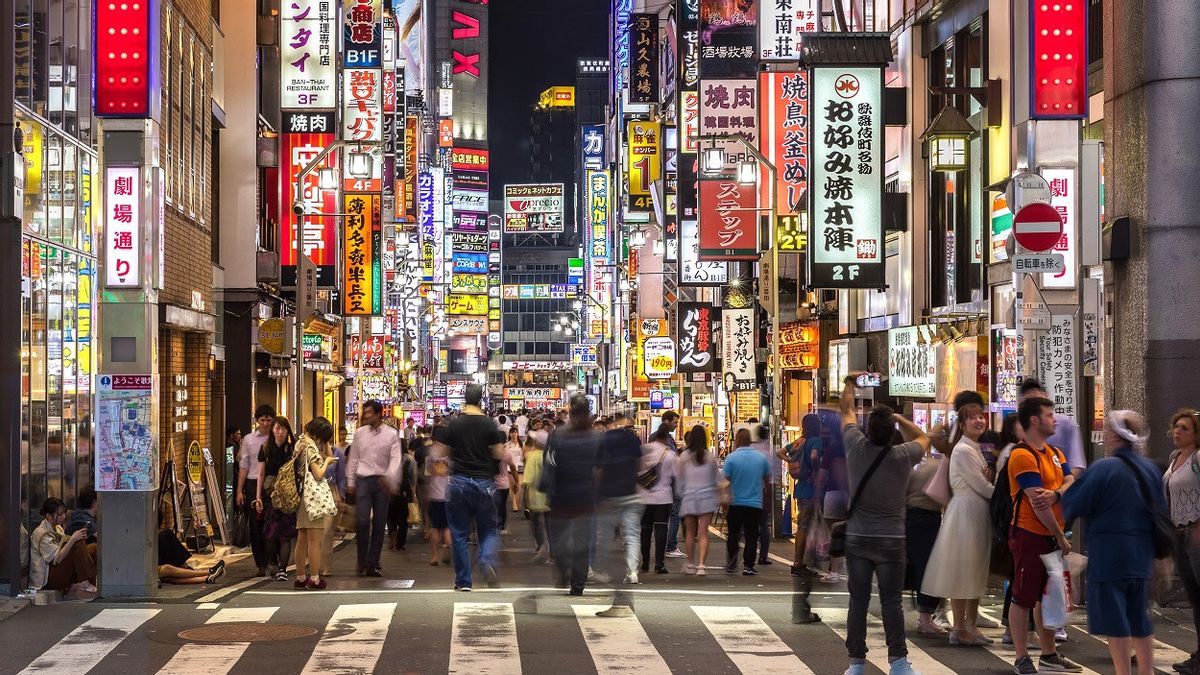JAKARTA - Japan offers attractive compensation for families willing to move from its overcrowded capital, in an effort to revitalize rural towns and increase birth rates.
Starting next April, families in Tokyo's metropolitan areas, including those headed by single parents, are entitled to receive 1 million yen (IDR 118,161,026) if they move to small-population areas across the country, according to a spokesman. from the government center.
This isn't the first time the government has tried to use financial incentives to encourage people to move, but this plan is more generous with a factor of three than currently offered, according to CNN Jan. 4.
For decades, people across Japan have migrated to the city center to find job opportunities. No wonder Tokyo is the country's most populous city, with around 37 million inhabitants.
Prior to the COVID-19 pandemic, the number of people moving to Tokyo exceeded the number of those leaving the city by up to 80,000 each year, according to government statistics released in 2021.
But this migration pattern, combined with Japan's rapidly aging population, has left rural cities with fewer residents, and millions of empty houses. More than half of the country's cities, excluding Tokyo's 23 districts, are expected to be designated as small-population areas by 2022, according to the national census.
Meanwhile in big cities, space runs out quickly and prices skyrocket. Tokyo has consistently become one of the most expensive cities in the world to live in, fifth ranked globally in 2022.
This problem, the migration of young people from rural areas to dense cities, is a key factor in Japan's larger demographic crisis, according to experts.
It is known, the Land of the Rising Sun has long struggled with a low birth rate and long life expectations, with the death toll exceeding the number of births in recent years.
Experts assess that there are several factors that cause, high cost of living, limited space and lack of child care support in cities make it difficult to raise children, meaning that fewer and fewer couples have children. Urban couples are also often far from large families who can help provide support. For example, Tokyo has the lowest fertility rate of 47 prefectures in Japan.
The current migration pattern produces a deserted hometown with few children. In the village on the banks of the Nagoro River in southern Japan, there were less than 30 residents in 2019, with the youngest population over the age of 50. The only school in the village was closed a few years ago after his last student graduated.
To address this issue, authorities launched an initiative in 2019 to attract people to the region.
Under this plan, individuals who have lived and worked in Tokyo's metropolitan area for at least five years can receive 600,000 yen (IDR 70,896,615) if they move to rural areas. That incentive is higher for the pair, which is 1 million yen (IDR 118,161,026).
Last year, the government allowed single parents or partners with children to receive 300,000 yen (Rp35,448,307) per child if they moved. Incentive applies to children under the age of 18, or dependents 18 years and over if they are still in high school,
Those moving can work in the area, set up their own businesses or keep working remotely at their Tokyo-based jobs, a government spokesman said.
"Tokyo has a very high concentration of population, and the government wants to increase the flow of people to the regions to revitalize regions with declining populations," he explained.
It is known, the program has an attraction, although in the early stages the number is still low. In the first year of its launch, only 71 households participated, compared to 1,184 households in 2021.
The English, Chinese, Japanese, Arabic, and French versions are automatically generated by the AI. So there may still be inaccuracies in translating, please always see Indonesian as our main language. (system supported by DigitalSiber.id)









